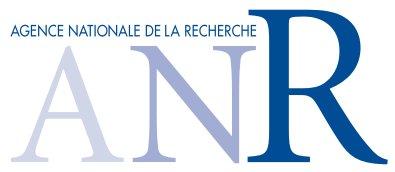- Project
ANR-16-CE33-0015 : National Research Agency. Accepted in June 2016 - Name
Field-Oriented Layered Dynamics animating 3D characters - Acronym
- FOLD-Dyn
- Type
Fundamental research - Collaborative project - Duration
48 month, beginning 22/01/2017, ending 21/01/2021 - Coordinator
Loïc Barthe - Address
- IRIT-CNRS UMR 5505 - Université Paul Sabatier
118, Route de Narbonne
31062 Toulouse Cedex 9, France - Contact
- 0033 (0)5 6155 6312 - Loic.Barthe@irit.fr
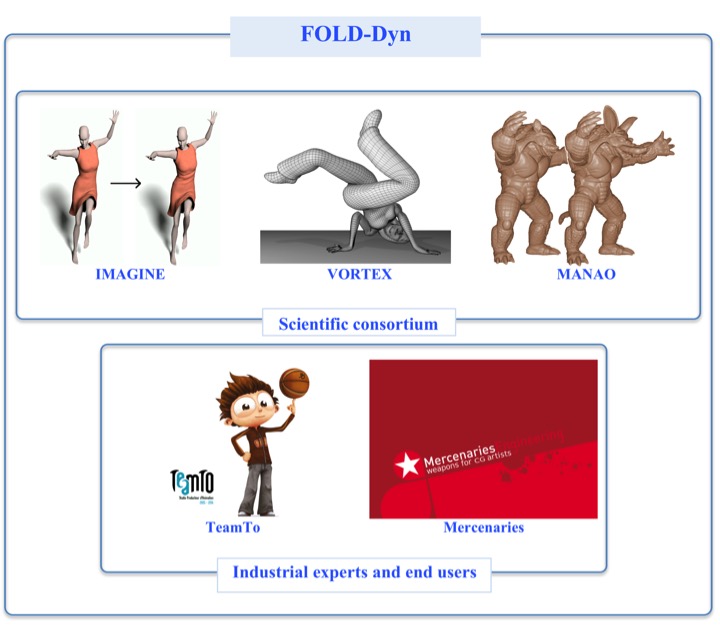
Presentation
![]() The FOLDDyn project proposes the study of new theoretical approaches for the effective generation of virtual characters deformations, when they are animated. These deformations are twofolds: character skin deformations (skinning) and garment simulations. When producing an animation movie, either for the cinema, television/online series or communication, these deformations are complex to compute and their creation requires hours of work from several specialized artists. In addition, the insertion of garment simulations in animation software requires the use of specific approaches in order to fit correctly within the code and then, in the production pipeline of animation studios. As a result, except for very realistic virtual characters interacting with real characters for live footage in movies, and for main virtual characters in 3D productions with a high budget, garment simulations are avoided and character deformations are rudimentary. In fact, most of the time, garments are rather deformed using simpler techniques, borrowed from skin deformations (and potentially identical), and these, despite very close partnerships between industrial and academic members in this community, which allows fast technological transfers when new promising approaches are discovered by researchers.
We propose to explore the possibilities offered by a novel theoretical way of addressing character deformations: the implicit skinning. This method jointly uses meshes (the standard representation for 3D animations) and volumetric scalar functions (an unusual representation in this community). The strength of this approach is to provide effective solutions when meshes reach their limits by exploiting, in these situations, the promising natural properties of 3D scalar functions, such as their ability to generate multiple collisionfree isosurfaces. By improving the theoretical properties of scalar functions, the study of their joint use with meshes, and the introduction of a new approach and its formalism called multilayer 3D scalar functions we aim at finding effective solutions allowing production studios to easily integrate in their pipeline plausible character deformations together with garment simulations. Such solutions would have a very significant impact on the realism of the final animations as well as on the quality and the visual attractiveness of the movies. From the academic point of view, the impact will be even more important since this research is a scientific break with the current approaches and they offer new perspectives that were considered as extremely challenging to reach so far.
This fundamental research project is carried out by an academic consortium formed of specialists in the fields of 3D modeling and animation, garment simulation and more specifically 3D scalar functions for virtual environments. They are members of the Institut de Recherche en Informatique de Toulouse, Inria Grenoble Rhône Alpes and Inria Bordeaux SudOuest. In order to guaranty the relevance of the research directions and the usability of the proposed results, this academic consortium will closely collaborate with industrial experts from the 3D animation industry: TeamTo production studios and the animation software developers from Mercenaries Engineers.
Preliminary works introducing and supporting the project:
The FOLDDyn project proposes the study of new theoretical approaches for the effective generation of virtual characters deformations, when they are animated. These deformations are twofolds: character skin deformations (skinning) and garment simulations. When producing an animation movie, either for the cinema, television/online series or communication, these deformations are complex to compute and their creation requires hours of work from several specialized artists. In addition, the insertion of garment simulations in animation software requires the use of specific approaches in order to fit correctly within the code and then, in the production pipeline of animation studios. As a result, except for very realistic virtual characters interacting with real characters for live footage in movies, and for main virtual characters in 3D productions with a high budget, garment simulations are avoided and character deformations are rudimentary. In fact, most of the time, garments are rather deformed using simpler techniques, borrowed from skin deformations (and potentially identical), and these, despite very close partnerships between industrial and academic members in this community, which allows fast technological transfers when new promising approaches are discovered by researchers.
We propose to explore the possibilities offered by a novel theoretical way of addressing character deformations: the implicit skinning. This method jointly uses meshes (the standard representation for 3D animations) and volumetric scalar functions (an unusual representation in this community). The strength of this approach is to provide effective solutions when meshes reach their limits by exploiting, in these situations, the promising natural properties of 3D scalar functions, such as their ability to generate multiple collisionfree isosurfaces. By improving the theoretical properties of scalar functions, the study of their joint use with meshes, and the introduction of a new approach and its formalism called multilayer 3D scalar functions we aim at finding effective solutions allowing production studios to easily integrate in their pipeline plausible character deformations together with garment simulations. Such solutions would have a very significant impact on the realism of the final animations as well as on the quality and the visual attractiveness of the movies. From the academic point of view, the impact will be even more important since this research is a scientific break with the current approaches and they offer new perspectives that were considered as extremely challenging to reach so far.
This fundamental research project is carried out by an academic consortium formed of specialists in the fields of 3D modeling and animation, garment simulation and more specifically 3D scalar functions for virtual environments. They are members of the Institut de Recherche en Informatique de Toulouse, Inria Grenoble Rhône Alpes and Inria Bordeaux SudOuest. In order to guaranty the relevance of the research directions and the usability of the proposed results, this academic consortium will closely collaborate with industrial experts from the 3D animation industry: TeamTo production studios and the animation software developers from Mercenaries Engineers.
Preliminary works introducing and supporting the project:
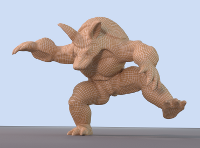
|
2014 R. Vaillant, G. Guennebaud, L. Barthe, M.P. Cani and B. Wyvill. "Robust Iso-Surface Tracking for Interactive Character Skinning", ACM Transactions on Graphics, 33(6), proc. of ACM SIGGRAPH ASIA, 2014. [pdf] [video] [vimeo] [YouTube] [transfer] [more] |
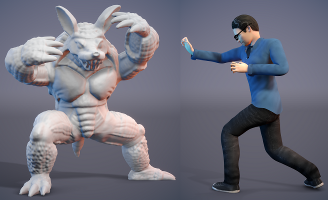 |
2013 R. Vaillant, L. Barthe, G. Guennebaud, M.P. Cani, D. Rhomer, B. Wyvill, O. Gourmel and M. Paulin. "Implicit Skinning: Real-Time Skin Deformation with Contact Modeling", ACM Transactions on Graphics, 32(4), proc. of ACM SIGGRAPH, 2013. [pdf] [video] [vimeo] [YouTube] [transfer] [free codes] [more] |
Academic Consortium
Industrial Collaborators
Members in the project
Partners around the project
Results
Implicit muscles
We introduce a new set of elastic implicit musclular primitives deforming at nearly constant volume. Muscle elasticity and collisions (muscle/bones and muscle/muscle) are handled using Position based Dynamics (Computer & Graphics 2018).
Sketch-based composition of implicit models
We introduce new gradient-based composition operator for combining implicit surfaces. The free-form shape linking the combined objects is inferred from a user sketches (Siggraph Asia 2017).
Publications
Journals
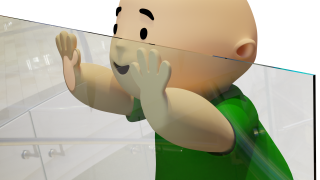 |
2020 C. Brunel, P. Bénard, G. Guennebaud, P. Barla. "A Time-independent Deformer for Elastic-rigid Contacts", Proceedings of the ACM on Computer Graphics and Interactive Techniques, 3(1), 2020. [pdf] |
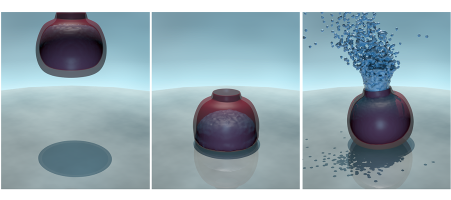 |
2020 N. Abu Rumman, P. Nair, P.Muller, D. Vanderhaeghe, L. Barthe. "SPH-PBD: Coupled Simulation of Incompressible Fluids and Deformable Bodies", The Visual Computer, 36(5), 2020. [pdf] [Vimeo] |
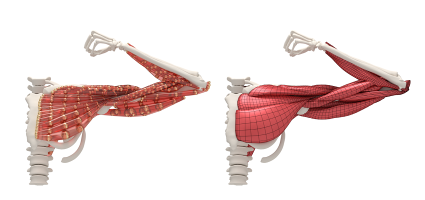 |
2019 B. Angles, D Rebain, M. Macklin, B. Wyvill, L. Barthe, J.P. Lewis, J. Von der Pahlen, S. Izadi, J. Valentin, S. Bouaziz and A. Tagliasacchi. "VIPER: Volume Invariant Position-based Elastic Rods", Proceedings of the ACM CGIT (PACMCGIT), 2(2), proceedings of ACM Siggraph/Eurographics Symposion on Computer Animation, 2019. [pdf] [YouTube] |
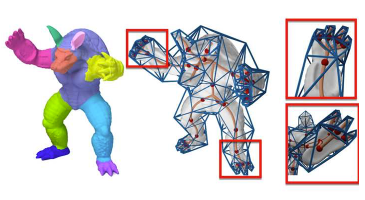 |
2019 S. Casti, M. Livesu, N. Mellado, N. Abu Rumman, R. Scateni, L. Barthe, E. Puppo. "Skeleton Based Cage Generation Guided by Harmonic Fields", Computer & Graphics, 81, pages 140-151, June 2019. [pdf] [YouTube] |
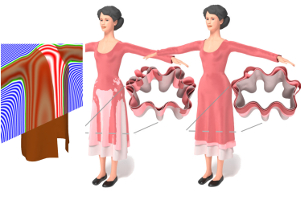 |
2019 T. Buffet, D. Rohmer, L.Barthe and M.P. Cani. "Implicit untangling: A robust solution for modeling layered clothing", ACM Transaction on Graphics, 38(4), proc. of ACM SIGGRAPH, 2019. [pdf] |
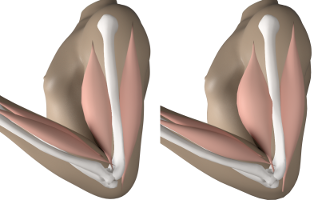 |
2018 V. Roussellet, N. Abu Rumman, F. Canezin, N. Mellado, L. Kavan, L. Barthe. "Dynamic implicit muscles for character skinning", Computer & Graphics, 77, 2018. [pdf] [video] [YouTube] |
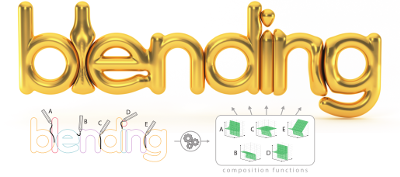 |
2017 B. Angles, M. Tarini, B. Wyvill, L. Barthe, A. Tagliasacchi. "Sketch-Based Implicit Blending", ACM Transactions on Graphics, 36(6), proc. of ACM SIGGRAPH ASIA, 2017. [pdf] [YouTube] |
Posters and Communications
2017 V. Roussellet. "Scalar fields and secondary motion in character animation", Presented at Eurographics 2017's Doctoral Consortium.
2016 V. Roussellet, N. Mellado, L. Barthe. "Implicit-based secondary motion for character animation", Presented at j.FIG 2016, Best paper award - second price.
Transfer
-
Implicit kinning Maya plugin
We develop a Maya plugin for commercial use, implementing both the time independent (2013) and the time dependent (2014) versions of the Implicit Skinning. All information here.see also STORM's YouTube Channel. -
Implicit skinning free demo
Based on our TOG 2014 paper, we distribute a stand-alone demo software illustrating the skin deformations produced by the time dependent version of the implicit skinning. Downloads for Linux, MacOS and Windows are provided. All information and downloads here.see also STORM's YouTube Channel.
Mediation: Large public and scholars
-
2017 - Nov. : CNRS communication on our Siggraph Asia 2017 publication : “Sketch-Based Implicit Blending” by Baptiste Angles et al.. See the advert here and the article here.
-
2017 - July : Lecture of 21h on shape deformations for digital animation for Master and PhD students given at the University of Cagliari (Italie).
